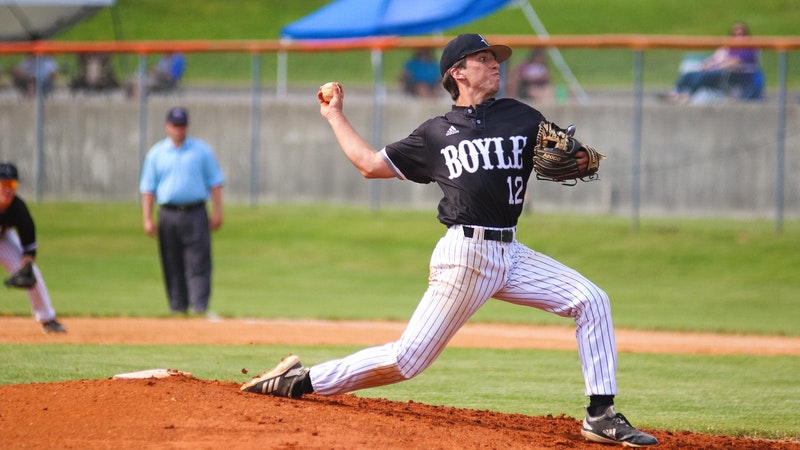In the intricate world of baseball, strategies are as crucial as the bat and ball themselves. One such tactical maneuver that can change the course of a game is the enigmatic “pitch out.” What exactly is a pitchout, and how does it work?
We’re here to demystify this defensive play and explore its intricacies. A pitch-out is a well-calculated move to thwart a base runner’s attempt to steal a base, primarily second base.
It involves precise orchestration between the pitcher, catcher, and infielders, making it a fascinating aspect of the sport.
From the art of signaling to the execution, this article will delve into the nuts and bolts of pitch outs, helping you understand when and how this tactic is deployed on the baseball diamond.
Whether you’re a seasoned fan or just starting to follow the sport, this insight into the pitch-out is bound to deepen your appreciation of America’s favorite pastime.
What Is a Pitch Out in Baseball?
There are many reasons people always want to know what a pitching out is in Baseball. A pitch out in baseball is a type of pitch that is deliberately thrown by the pitcher and directed outside the strike zone and away from the batter.
The primary purpose of a pitch-out is to prevent a potential base stealer from successfully stealing a base, most commonly the second base.
Pitching out is a defensive strategy used by the catcher and the team’s coaching staff in anticipation of a stolen base attempt.
When a pitch out is called, the catcher positions himself farther from the plate and towards the side of the base where the steal is expected.
The pitcher then delivers the ball high and wide, making it easier for the catcher to catch and release the ball quickly to throw out the runner attempting to steal.
Pitching out can also be used to intentionally walk a batter by throwing four consecutive pitches outside the strike zone, although this is less common than using pitch outs for preventing stolen bases.
Basics of Baseball Pitching Out
You should learn all the basics of pitching out to properly know what are pitching outs. Pitching out in baseball is a defensive maneuver used to prevent a base runner from successfully stealing a base.
Here are the basics of how it works:
Signaling the Pitch Out
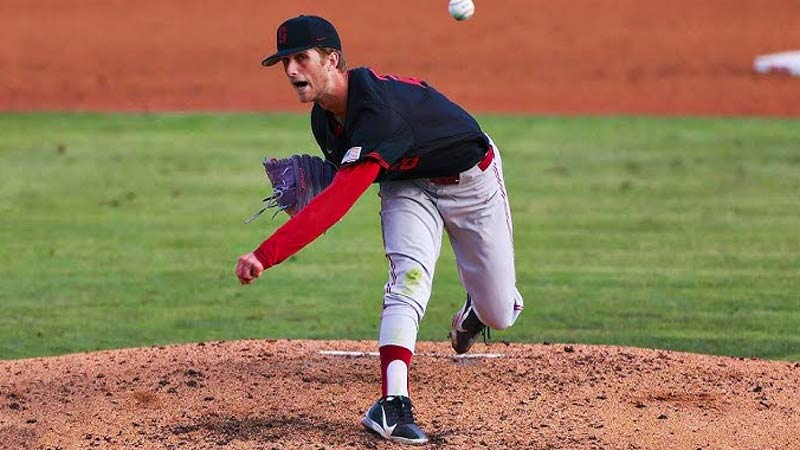
The decision to pitch out is typically made by the catcher or the coaching staff based on various factors, including the situation in the game, the base runner’s tendencies, and the count on the batter.
The catcher signals for a pitch out by giving a specific sign to the pitcher. The pitcher and catcher must be in sync to execute the pitch out effectively.
Pitcher’s Delivery
The pitcher, upon receiving the pitch-out signal, will adjust their stance on the pitching rubber and prepare to deliver the pitch. The goal is to throw the ball outside of the strike zone, usually high and away from the batter.
Catcher’s Positioning
The catcher moves to a position that allows for a quick and accurate throw to the base where the base runner is attempting to steal. This is usually the second base if the runner is attempting to steal second.
Timing and Execution
The pitcher delivers the pitch high and outside, away from the batter’s reach. The idea is to make it easy for the catcher to catch the ball and make a strong throw to the base.
The catcher should catch the pitch cleanly and immediately prepare to throw to the base. The throw must be quick and accurate to have a chance of catching the base runner.
Defense’s Role
In addition to the pitcher and catcher, the infielders must be prepared to cover the base and be in a position to receive the throw.
If the throw from the catcher is on target and in time, the infielder can apply the tag to the base runner to try to get them out.
Baserunner’s Reaction
The base runner attempting to steal a base may recognize the pitch out and choose not to continue the steal attempt. They might return to the original base or even stop in between bases to avoid getting caught in a rundown.
Pitching out is a defensive tactic that aims to deter base runners from stealing bases and disrupt their timing and confidence.
It requires good communication and coordination between the pitcher, catcher, and infielders. If executed correctly, it can be an effective tool for preventing stolen bases and maintaining control on the defensive side of the game.
The Purpose of a Pitch Out in Baseball
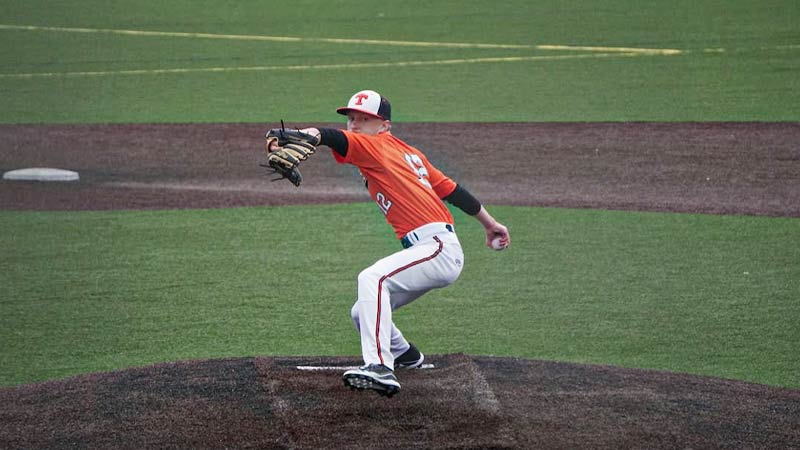
To learn what is a pitching out, you should know its purposes. A pitch out in baseball is a defensive maneuver used to prevent a base runner from successfully stealing a base.
Here’s how a pitch-out works:
Signal and Preparation
The decision to pitch out is typically made by the catcher or, in some cases, by the coaching staff. The catcher gives a signal to the pitcher to indicate that a pitch out is the desired play.
The pitcher, upon receiving the pitch-out signal, adjusts their stance on the pitching rubber and prepares to deliver the pitch.
Pitcher’s Delivery
The pitcher’s goal is to throw the ball outside of the strike zone, typically high and away from the batter. The pitch should be intentionally difficult for the batter to swing at or make contact with.
Catcher’s Positioning
The catcher moves to a position that allows for a quick and accurate throw to the base where the base runner is attempting to steal. This is usually the second base if the runner is trying to steal second base.
The catcher positions themselves in a way that allows them to catch the pitch cleanly and transition quickly to a throwing position.
Timing and Execution
The pitcher delivers the pitch high and outside, away from the batter’s reach. The goal is to make it easy for the catcher to catch the ball and make a strong throw to the base.
The catcher should catch the pitch cleanly and immediately prepare to make the throw to the targeted base. The timing of the throw is crucial, as it needs to be in sync with the base runner’s attempt to steal.
Defense’s Role
Infielders, particularly the middle infielder covering the base (usually the second baseman or shortstop), must be prepared to receive the throw and apply a tag to the base runner.
They need to be in the proper position to accept the throw and make a quick tag if the runner attempts to steal.
Baserunner’s Reaction
The base runner attempting to steal a base may recognize the pitch out and choose not to continue the steal attempt. They might either return to their original base or attempt to get back in a rundown.
A successful pitch-out disrupts the base runner’s timing and can deter them from attempting to steal a base. It’s a defensive strategy aimed at keeping control of the base paths and minimizing the opponent’s chances of advancing.
Effective communication and coordination between the pitcher, catcher, and infielders are key to executing a pitch out successfully.
How Does a Pitch Out Work?

A pitch out in baseball is a defensive strategy used to thwart a base runner’s attempt to steal a base, typically second base. Here’s how a pitch out works:
Signaling the Pitch Out
The decision to execute a pitch out is typically made by the catcher or relayed by the coaching staff. The catcher will give a specific sign to the pitcher to indicate that a pitch out is the play to be made.
Pitcher’s Delivery
Once the pitch-out signal is received, the pitcher adjusts their stance and prepares to throw the ball.
The pitcher aims to deliver the ball well outside the strike zone, usually high and away from the batter. This makes it difficult for the batter to swing at the pitch.
Catcher’s Positioning
The catcher moves to a position that allows for a quick and accurate throw to the base where the base runner is attempting to steal, typically second base.
The catcher positions themselves so that they can easily catch the pitch and make a rapid, accurate throw.
Timing and Execution
The pitcher throws the pitch high and outside, making it easy for the catcher to catch it cleanly. The idea is to allow the catcher to make a strong, precise throw to the base with minimal effort.
The catcher must catch the pitch cleanly and quickly transition into a throwing motion to get the ball to the target base in time.
Infielders’ Roles
Infielders, particularly the player covering the base, typically the second baseman or shortstop, should be prepared to receive the throw and apply the tag if the base runner tries to steal.
They position themselves in a way that facilitates an efficient tag.
Base Runner’s Reaction
If the base runner recognizes the pitch out, they may decide not to proceed with their steal attempt. Instead, they may stop, return to their original base, or attempt to get involved in a rundown situation to evade being tagged out.
A successful pitch-out can disrupt the base runner’s plans and deter them from attempting a stolen base.
It is a defensive tactic designed to maintain control over the base paths and reduce the chances of an opponent advancing to the next base.
Effective coordination between the pitcher, catcher, and infielders is essential for executing a pitch out effectively.
When to Use a Pitch Out?
A pitch out in baseball is used as a defensive strategy to prevent a base runner from successfully stealing a base, typically second base. Knowing when to use a pitch-out is important and depends on various factors.
Here are some situations when a team might choose to use a pitch-out:
Base Runner’s Tendencies
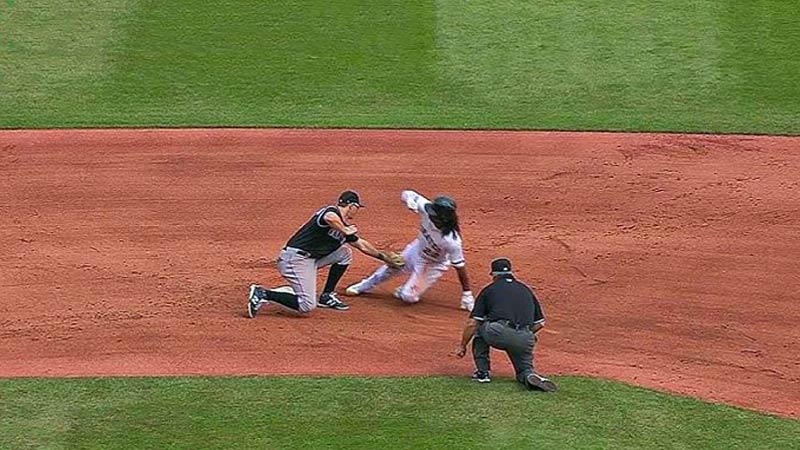
If a particular base runner is known for frequently attempting to steal bases, especially in key situations, a pitch out may be used to deter their steal attempt.
Count on the Batter
Pitch outs are often more likely to be called when the count on the batter is favorable for a base runner to attempt a steal.
For example, a 3-1 or 3-0 count on the batter gives the runner a good opportunity to predict a fastball and attempt a steal. A pitchout can be used to counter this.
Game Situation
The game situation can influence the decision to pitch out.
In critical moments, such as late innings in a close game or during playoff situations, teams may be more inclined to use pitch outs to protect their lead and control the base runners.
Base Runner’s Speed
Faster base runners are more likely to attempt steals. Teams may use pitch-outs against speedier runners to increase their chances of throwing them out.
Pitcher and Catcher Skills
The proficiency of the pitcher and catcher in executing a pitch out is essential. If they have a good track record of accurate and quick throws, the team may be more inclined to use this strategy.
Scouting and Research
Teams often gather information on their opponents, including the tendencies of base runners. Scouting reports and analysis of an opponent’s tendencies can inform the decision to use a pitch out.
Manager’s Judgment
Ultimately, the decision to use a pitch out may come down to the manager’s judgment and strategy. They may call for a pitch out based on their experience and assessment of the game situation.
Psychological Warfare
Sometimes, teams use pitch-outs strategically to mess with a base runner’s mind. Even if a pitch-out isn’t expected, throwing one can make the runner more cautious in future steal attempts.
Historical Success
If a team has a history of successfully using pitch outs against a particular opponent or base runner, they may be more likely to use this strategy again in similar situations.
It’s important to note that pitchouts are a calculated risk.
While they can be effective in preventing stolen bases, they also use up one of a team’s pitches, which can impact the pitcher’s pitch count and potentially lead to a more favorable count for the batter.
Therefore, they should be used judiciously and with consideration of the specific game circumstances.
The Risks and Challenges of Pitch Outs
Pitch outs in baseball can be an effective defensive strategy to prevent stolen bases, but they also come with certain risks and challenges that teams need to consider:
Pitch Count
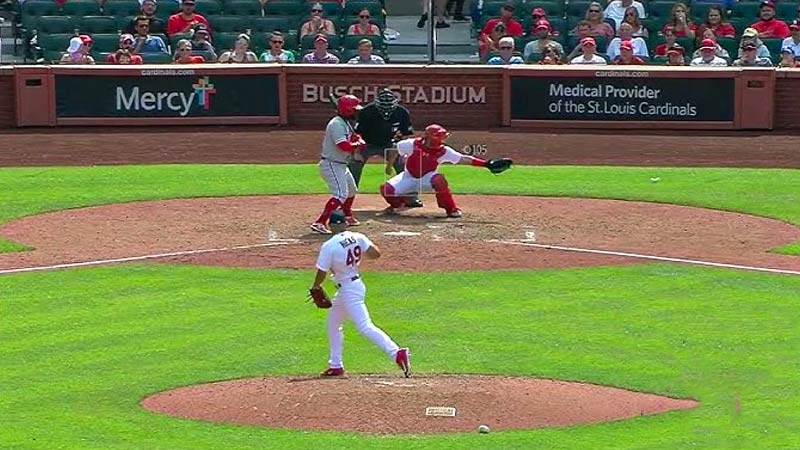
Each pitch out consumes one of the pitcher’s pitches. If a team uses pitch-outs frequently, it can lead to an increase in the pitcher’s pitch count, potentially leading to early fatigue or a shorter outing for the pitcher.
This can have implications for the overall game strategy, especially in the later innings.
Ball and Strike Count
A pitch-out is typically thrown outside of the strike zone. If the pitcher consistently throws pitch outs, it can lead to a higher number of balls in the count, which could put the batter in a favorable position.
This benefits the batter and puts additional pressure on the pitcher to throw strikes in subsequent pitches.
Ineffective Execution
A poorly executed pitch out, such as a pitch that is too low or too close to the plate, can be easily hittable by the batter.
In such cases, the batter may take advantage of the pitch and drive it for a hit, or the catcher may struggle to make a throw to catch a stealing runner.
Runner’s Reaction
If the base runner does not attempt to steal during a pitch out, it results in a wasted pitch and a delay in the game.
A savvy base runner may recognize the pitch out and decide to stay put, essentially nullifying the purpose of the pitch out.
Potential for Wild Throws
The throw from the catcher to the base may be rushed, leading to inaccurate throws that allow the base runner to advance or reach the next base safely.
In some cases, the throw could end up in the outfield, leading to an additional base awarded to the runner.
Timing and Coordination
A pitch out requires precise timing and coordination between the pitcher, catcher, and middle infielders covering the base. If there is miscommunication or hesitation, the effectiveness of the pitch out can be compromised.
Psychological Impact
Overusing pitch-outs can have a psychological impact on the pitcher and catcher. The pitcher may become more cautious about throwing to the plate, potentially affecting their overall pitching performance.
The catcher may also become fatigued or lose confidence in their throwing ability.
Wasted Opportunity
In some cases, a pitch out may be called when there was no real threat of a base steal. This can result in a wasted opportunity to throw a pitch that could have been used more strategically against the batter.
Counter Strategies
Opposing teams may adapt to frequent pitch outs by employing different strategies, such as delayed steals or hit-and-run plays. This can put additional pressure on the defense to respond effectively.
Pitcher-Catcher Relationship
A pitch out relies heavily on the trust and communication between the pitcher and catcher. If this relationship is not well-established or if there is miscommunication, the execution of a pitch out may suffer.
While pitch outs can be a valuable tool for preventing stolen bases, they come with various risks and challenges that teams must weigh against the potential benefits.
The decision to use a pitch out should be made strategically and based on an assessment of the game situation and the abilities of the pitcher, catcher, and defense.
FAQs
What is pitching out meaning?
A “pitch out” in baseball refers to a deliberate pitch thrown by the pitcher to the catcher, far outside the strike zone, often to prevent a potential base stealer from advancing to the next base.
What is a pitch out in baseball?
In baseball, a “pitch out” is a strategic move where the pitcher intentionally throws a pitch far from the batter’s reach and closer to the catcher to give the catcher a better chance to throw out a base runner attempting to steal a base.
What counts as a pitch out?
A pitch out is counted when the pitcher throws a ball intentionally high and wide of the strike zone to allow the catcher to quickly catch the ball and make a throw to catch a base runner attempting to steal a base.
It is a defensive tactic to prevent stolen bases.
When is a pitch out typically used?
Pitch outs are often employed when the defensive team suspects that a base runner may attempt to steal a base, such as in situations with a fast runner or a hit-and-run play. It’s a defensive strategy to deter base stealing.
What is the purpose of a pitch out in baseball?
The primary purpose of a pitch out is to prevent base runners from successfully stealing bases by making it easier for the catcher to quickly retrieve the ball and throw it to the intended base.
It is a strategic move used to gain a defensive advantage during a game.
Wrapping Up
The pitch out in baseball is a testament to the depth and strategy that underlie the sport. It’s not just about pitching and hitting; it’s about controlling the base paths and seizing every opportunity to gain an advantage.
We’ve unraveled the mysteries behind this defensive play, from the well-timed signal to the coordinated execution that involves the pitcher, catcher, and infielders.
By understanding the when and how of pitch outs, you’ve gained insights into the chess match that is baseball, where tactics and execution can tip the balance of a game.
Whether you’re watching the next major league showdown or a local little league match, you’ll have a new appreciation for the subtle complexities that make baseball the beloved and intricate sport that it is.
So, keep your eye on the pitcher’s signal, because the pitch out is a hidden gem in the game of baseball.

